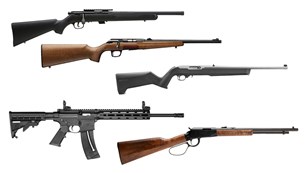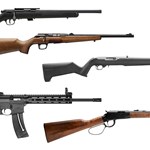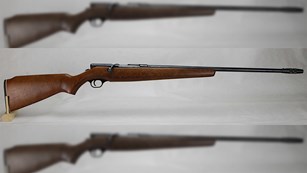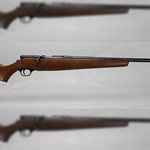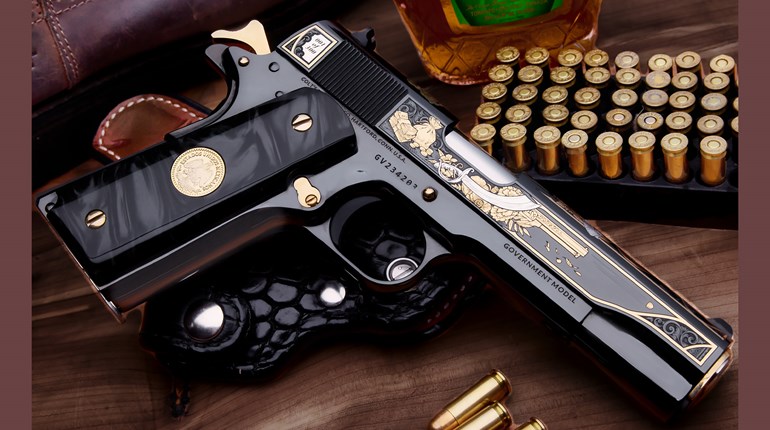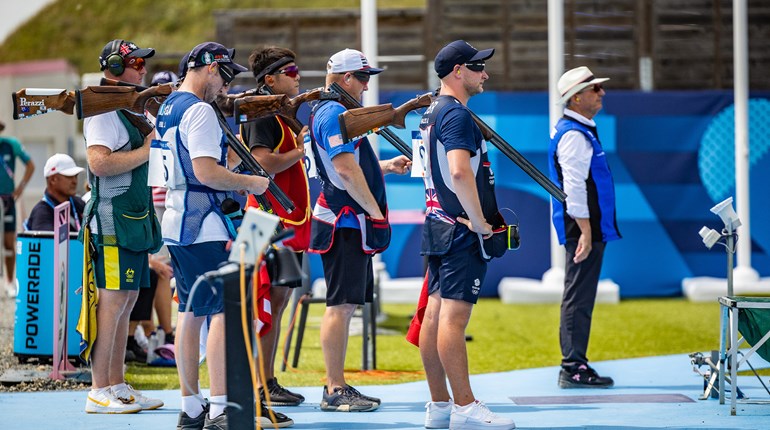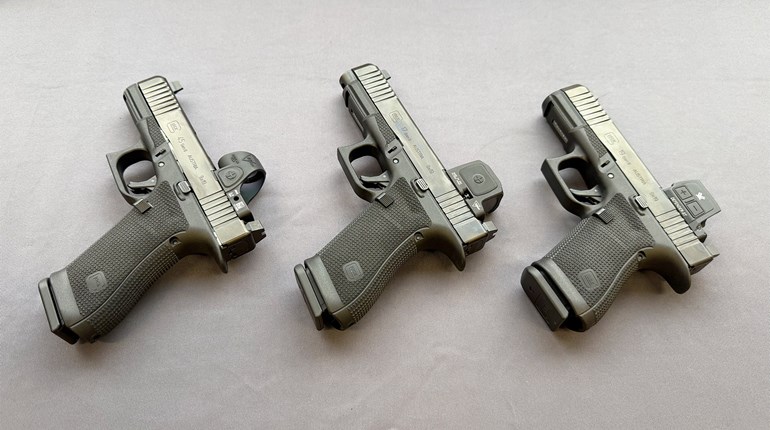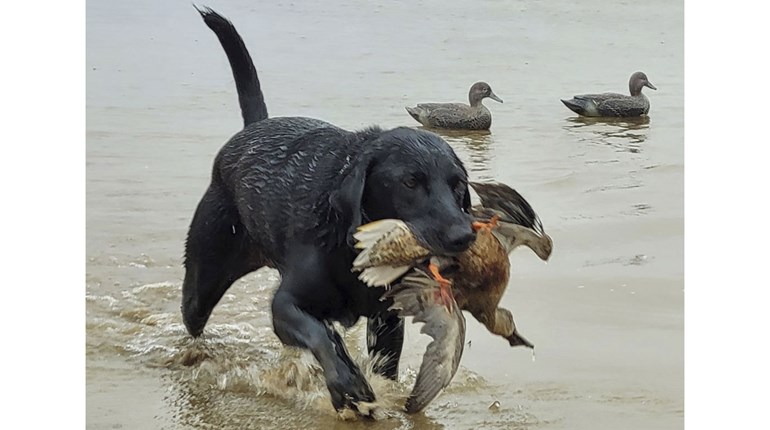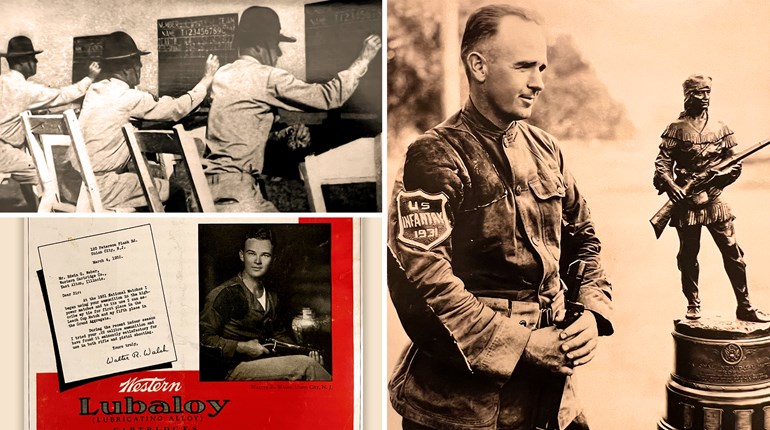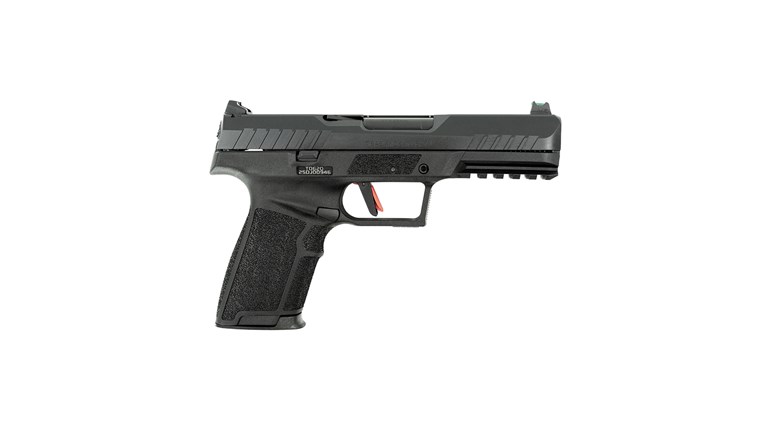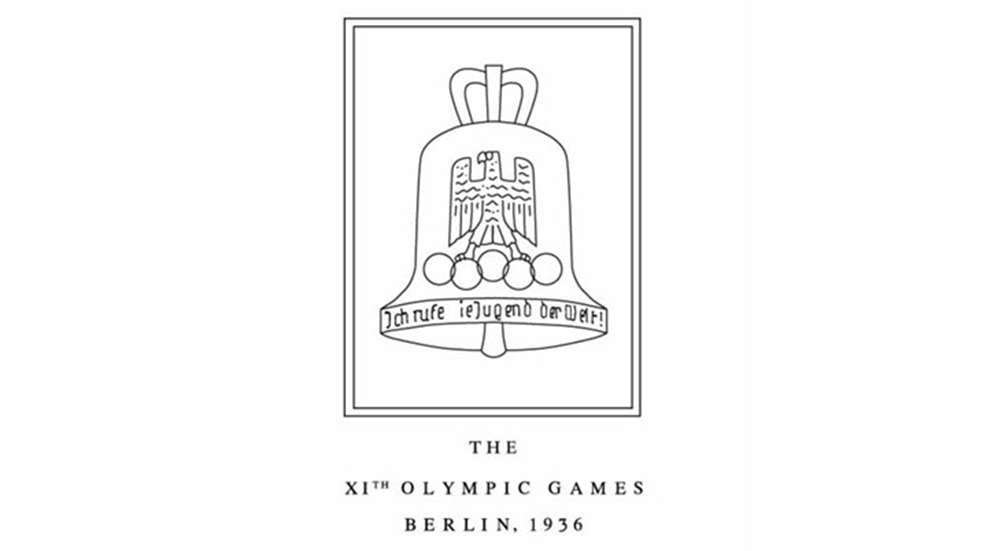
The below is an excerpt from the 1978 book, Olympic Shooting, written by Col. Jim Crossman and published by the NRA. Read Part 1 and Part 2.
1936—Berlin: Amateurs Once Again (Part 3)
By Colonel Jim Crossman
After the arrival in Europe, the 1936 pistol team put up with the two hours per day of travel up to Wansee and back from the Olympic Village. Optimistic at first, the Americans soon realized that they had tough competition. Even after all the years complaining about being outgunned by the superior foreign equipment, the slow-fire team was still shooting the old Smith & Wesson single-shot pistol against the foreign free pistols. The rapid-fire shooters came up against a new gun—the Walther autoloader with a lightweight slide, designed to shoot the .22 short cartridge. While it may seem silly to talk about the recoil from the .22 long rifle cartridge, when the shooter is trying to squeeze off six hits on six silhouette targets in two seconds, every tiny detail is important. The new Walther, specially weighted, balanced and designed for the rapid-fire course, far outclassed the American pistols. The German team and some of the Swedish group were among those shooting the new pistol.
In training, too, the Americans found they were up against some old hands at the game. The rapid-fire course still was not popular in the United States, the handgunners much preferring slow-fire or timed- and rapid-fire at the conventional bullseye target with conventional U.S. pistols and revolvers.
They practiced on electrically turned targets...
Fisher, for example, had received little or no training and very little practice before he showed up at the preliminary tryouts—with a pistol that weighed over six pounds. On the other hand, some of the German team lived in Berlin and had shot on the Wansee range nearly every day for the past year or more and for the past several months using the new Walther pistol. They practiced on electrically turned targets and the horrible discovery was made by the Americans that what they had been calling two seconds on their hand operated tryout targets turned out to be more than three seconds on to the fast German targets. Added to this, they found that the German team included Capt. Heinz Hax, who had been on the 1928 pentathlon team and had won a silver medal in the rapid-fire event in 1932, while the Italian team included Walter Boninsegni, who was just out of the medals in 1932 and who held the world record in this event, set in 1935.
The worst fears of the Americans were realized when the match started. Shooting on a cold, rainy, wet morning and hampered by overcoats, the Americans did not do too well. Doob barely caught one shot in the 8-second stage, while Fisher also had 18 hits, all of them good. Hudnutt hit 6 on his first string and 6 on his second, but ended the third string with 5 good hits before the targets turned away and left one shot to go. In trying to make sure of the hits, he had run out of time, and that was the end of him in the match.
Out of the 28 shooters who lasted through the 18 shot 8-second stage, Fisher went clean on the first shoot-off, at 6 seconds. He had plenty of company, with 16 others surviving this stage, not including Doob, who dropped 2.
At the end of the 4-second stage there were 5 shooters left with clean scores, but the last American had dropped out with 2 misses. In the 3-second time limit, Cornelius van Oyen of Germany went clean, while teammate Heinz Hax hit 5 targets to win his second silver medal in this event, with third going to Sweden's Torsten Ullman and his 4 hits.
While Fisher's 15th place in the rapid-fire match was not close to the medals, Elliott Jones did a bit better in the slow-fire match, ending in sixth with 536. Only 8 points separated second and sixth places, but between second and first there was a gap of 15 points, with the high 559 setting a new world and Olympic record. The winner? None other than Torsten Ullman, fresh from his bronze medal in the rapid-fire match. Of the 60 shots at 50 meters (55 yards), Ullman put 22 in the 10-ring of 2-inch diameter; he put 36 in the 3.9-inch 9-ring, only twice getting out of the 9-ring.
On the rifle range, the same match as in 1932 was fired, but scores were much higher. Where the 30 shots prone at 50 meters had gone for 294 in the previous Games, at Wansee second through sixth all had 296, while Willy Rogeberg of Norway put all his shots in the nickel-sized 10-ring for a 300 and a new Olympic record.
The bright spot in American shooting was the performance of Lt. Charles Leonard in the pentathlon. He won the pistol stage, shot on the single silhouette target exposed for 3 seconds per shot. He scored a perfect 200, putting all shots in the center 10-ring. He finished second in the pentathlon, the highest an American had placed up to that time—or since. At Los Angeles, Lt. Richard Mayo had been the first American to finish in the prizes. Mayo also took first in the shooting, which had given him a big boost towards his bronze medal.
The 1936 Games were put on in a magnificent fashion. The Germans built four new stadia, new swimming pools, an outdoor theater, a polo field and a fine new Olympic Village. The ranges were well equipped and well run and everything showed the painstaking planning and effort aimed at perfection.
Take the matter of lighting the fire on the Olympic torch at the opening ceremonies in the stadium. More than a week before the Games started, a group of Grecian girls, wearing ancient costumes, gathered at the ruins of the Temple of Zeus in Olympia. Using a magnifying glass to concentrate the rays of the sun, they started a fire. Carrying the fire in an antique lamp they went out of the sacred grove to a square where a runner was waiting. Lighting his torch with the lamp, they sent him in the general direction of Berlin, 1,800 miles away. Running about a half mile, he found another runner, whose torch he lit, and away went the second man towards Berlin. Through Greece, Bulgaria, Yugoslavia, Hungary, Austria, Czechoslovakia and Germany, by night and by day, the flame was carried from one torch to another, until the last man of the 3,300 runners carried the fire into the opening ceremonies to light the torch. The winner of the marathon at the first modern Games 40 years before, Spiridon Loues, then stepped out of the ranks of the Greeks and gave Hitler an olive branch from the sacred grove at Olympia.
While the games were perfection in some ways, shooters were not too happy for two reasons: the very short shooting program and the performance of our team. The team's performance was not too surprising, since we still had not seriously taken up the foreign shooting methods and we had no backlog of capable, experienced international shots.
Despite the fact that all past sins had been forgiven, the 1936 team had no shooters with previous Olympic experience, although some had gained considerable experience in local matches. With this background and with their inferior equipment, it was not surprising, although disappointing, that the U.S. team did not do better.
Read more: Los Angeles 1932 Olympics: On U.S. Soil, But Problems Develop





